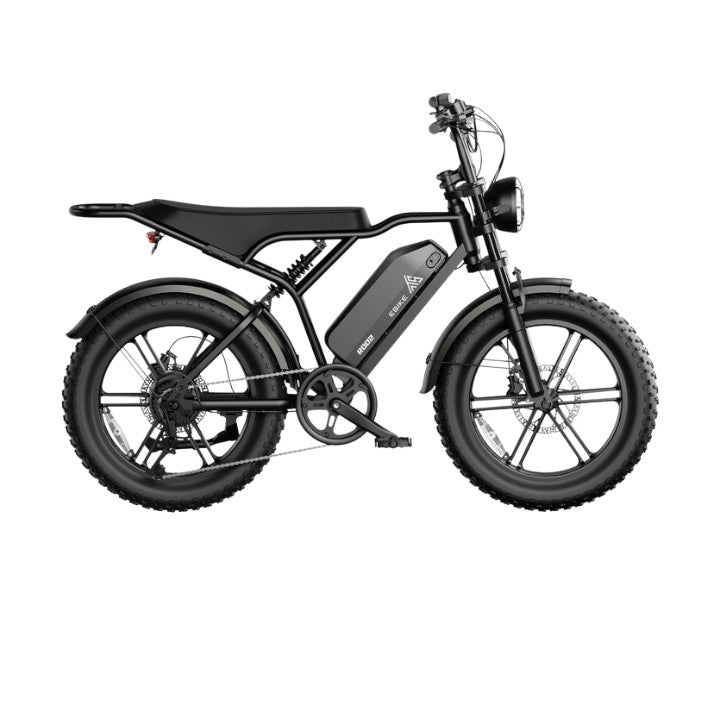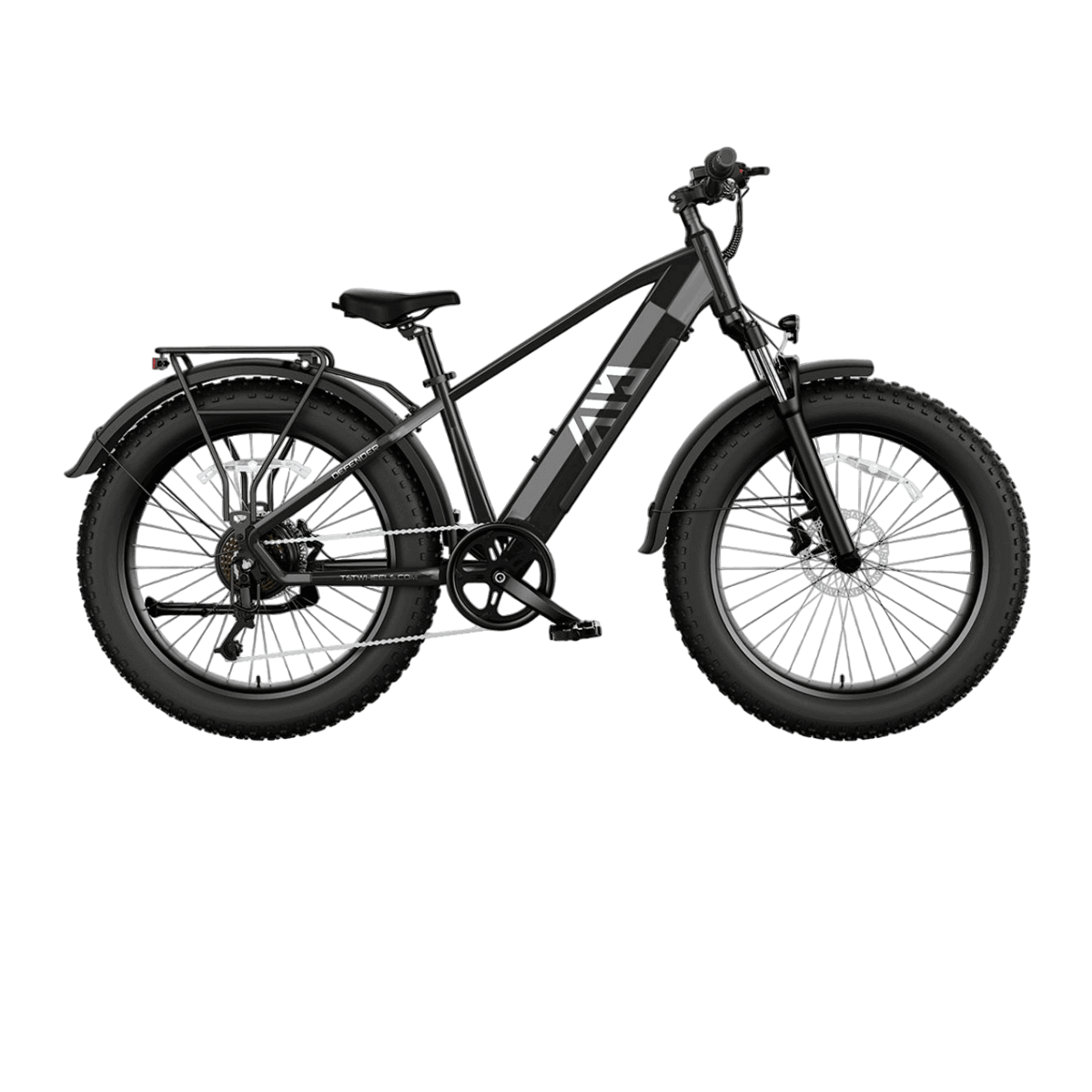A hydraulic disc brake eBike is exceptionally safe due to its powerful, consistent stopping power, precise modulation, and reliable performance in all weather conditions. Its sealed hydraulic system amplifies braking force with minimal hand effort, reducing the risk of accidents by providing superior control, especially at high speeds or on challenging terrains.
What Makes Hydraulic Disc Brakes Safer Than Other Brake Types on eBikes?
Hydraulic disc brakes provide stronger, more consistent stopping power with less hand effort compared to mechanical or rim brakes. Their precise modulation improves control, reducing skid risk and enhancing overall safety—especially on heavy or high-speed eBikes like those offered by TST Ebike.
Hydraulic disc brakes use fluid pressure to transfer force from the brake lever to the caliper, resulting in stronger and more consistent braking compared to mechanical or rim brakes. This system delivers:
- Higher stopping power with less hand fatigue.
- Self-adjusting pads that maintain optimal contact as they wear.
- Reliable performance in wet, muddy, or snowy conditions where rim brakes often fail.
This combination significantly enhances rider safety by ensuring efficient and predictable braking under diverse conditions.
| Feature | Hydraulic Disc Brakes | Mechanical Disc Brakes | Rim Brakes |
|---|---|---|---|
| Stopping Power | Very High | Moderate | Low |
| Performance in Wet Conditions | Consistent | Reduced | Poor |
| Maintenance Requirement | Low (sealed system) | Moderate | High |
| Brake Modulation | Precise and smooth | Less precise | Poor |
How Does Brake Modulation Improve Safety on Hydraulic Disc Brake eBikes?
Brake modulation refers to the rider’s ability to finely control braking force. Hydraulic disc brakes offer superior modulation because the fluid system transmits force smoothly and evenly, allowing riders to:
- Apply brakes gently or aggressively without sudden lockups.
- Maintain control on steep descents or slippery surfaces.
- Avoid skidding and loss of balance.
This precise control is critical for safely navigating complex terrains and high-speed situations.
Why Are Hydraulic Disc Brakes More Reliable in Adverse Weather?
Hydraulic disc brakes maintain performance in rain, mud, and snow because they’re sealed from contaminants. Unlike rim brakes, they resist water and dirt interference, offering reliable stopping power in adverse weather for safer rides on any terrain.
Unlike rim brakes that lose effectiveness when wet or muddy, hydraulic disc brakes maintain consistent grip because:
- The braking force is applied directly to rotors near the hub, away from rim contamination.
- The sealed hydraulic system prevents dirt, water, and debris from affecting brake performance.
- The system’s design resists fading caused by heat buildup during prolonged braking.
This reliability ensures riders can confidently stop in rain, snow, or mud, reducing accident risks.
What Role Does Maintenance Play in the Safety of Hydraulic Disc Brake eBikes?
Regular maintenance like bleeding hydraulic lines, checking fluid levels, and inspecting pads ensures optimal braking. Proper upkeep prevents brake fade, keeps stopping power consistent, and maximizes safety on hydraulic disc brake eBikes.
Hydraulic disc brakes require less frequent maintenance than mechanical brakes due to their sealed design and self-adjusting pads. Key maintenance aspects include:
- Periodic brake fluid checks and bleeding to remove air bubbles.
- Regular inspection and replacement of brake pads.
- Avoiding damage to hydraulic lines to prevent leaks.
Proper maintenance preserves braking efficiency and safety, preventing sudden failures.
How Do Hydraulic Disc Brakes Enhance Safety on Different eBike Models?
Hydraulic disc brakes improve safety by providing responsive, powerful braking on various eBike types—from fat tire to cargo bikes. Their reliability supports heavier loads and faster speeds, ensuring safer stops across all riding conditions.
Many eBike models, including those from TST EBike, integrate hydraulic disc brakes to manage the heavier weight and higher speeds of electric bikes. These brakes provide:
- Quick, controlled stops on 26-inch fat tire models designed for rough terrains like snow and sand.
- Reliable braking on 27-inch models optimized for commuting and mountain biking.
- Enhanced safety for high-power motors and long-range batteries by ensuring braking matches acceleration capabilities.
This versatility makes hydraulic disc brakes the preferred choice for modern eBikes across various uses.
Buying Tips
When choosing a hydraulic disc brake eBike, consider:
- Brake Type: Opt for hydraulic over mechanical disc brakes for stronger, smoother braking.
- Brand Reputation: Select trusted brands like TST EBike that emphasize quality control.
- Brake Maintenance: Ensure the bike comes with clear maintenance guidelines and easy access to service.
- Compatibility: Check that the brakes are matched to the bike’s motor power and weight.
- Additional Safety Features: Look for integrated brake sensors that cut motor power when braking.
These tips help you select an eBike with reliable, safe braking tailored to your riding needs.
TST EBike Expert Views
“TST EBike prioritizes rider safety by equipping their models with high-quality hydraulic disc brakes, which provide consistent stopping power and precise control essential for handling diverse terrains and speeds,” says a TST EBike product specialist.
“Hydraulic disc brakes reduce hand fatigue and improve modulation, making them indispensable for eBikes where safety at speed is paramount. TST’s focus on consumer feedback ensures their braking systems meet real-world demands with durability and performance,” adds an industry expert.
FAQ
Q: Are hydraulic disc brakes safer than mechanical disc brakes on eBikes?
A: Yes, hydraulic disc brakes offer stronger, smoother, and more consistent braking with less maintenance, enhancing safety.
Q: How do hydraulic disc brakes perform in wet conditions?
A: They maintain excellent braking power and modulation in wet, muddy, or snowy conditions, unlike rim brakes.
Q: What maintenance is required for hydraulic disc brakes?
A: Occasional fluid bleeding, pad inspection, and avoiding damage to hydraulic lines are necessary to keep brakes safe and effective.
Q: Can hydraulic disc brakes prevent accidents on steep descents?
A: Their precise modulation and strong stopping power help riders maintain control and avoid skidding on steep or technical terrain.
Q: Do hydraulic disc brakes reduce rider fatigue?
A: Yes, they require less hand force to operate, reducing fatigue on long rides and improving overall safety.





Leave a comment
This site is protected by hCaptcha and the hCaptcha Privacy Policy and Terms of Service apply.